#its queue time
Text
So I just saw a post about the catacombs in Paris and I didn't want to put this in the notes/reblogs in there because I didn't want to derail it but...
Seeing people in the notes on that post going "its disrespectful to touch the bones" and so on... listen you do not understand the catacombs in Paris if you're saying this.
The small bit of catacombs you pay to walk through? All those bones, nicely piled and prettied up? They salvaged what they could from the mess that are the actual catacombs and made it presentable.
The bits you don't pay to see? The bits that are closed to the public & illegal to visit? You won't find a single skull, because they all got destroyed or stolen (yes, stolen, you heard me right). There's literally parts of the catacombs where you have to walk or crawl on bones to cross. Not bones carefully piled neatly against the walls, just bones strewn around on the ground.
The "real" catacombs are not what is being sold to tourists to see, and there is nothing respectful about them. They're not a monument to the dead. They're the bones of 6 million people dug out of their (mass) graves because the cemeteries were overflowing and ignoring the problem did not make it go away.
They're mass graves because they didn't know where to put the dead anymore.
I'm not a historian, I can't garantee that was I just said is 100% true. But I've been there alright. I've seen the rooms full bones. So that much I can assure you is real.
#There's dozens of videos out there if you're interested in actually learning about the real catacombs.#idk if I'm just mildly traumatised from the time I was down there#but seeing people act as if you can further disrespect the bones down there really just... rubs me the wrong way#paris catacombs#damie talks#clearing the drafts#its queue time
18 notes
·
View notes
Text
okay okay okay
likes: 11,255 -!> 11,083 -> 11,095 -!> 10,783
main: 30 -!> 93 -> 88 -!> 169
xiv: 0 -!> 2 -> 0 -!> 5
green: 0 -!> 5 -> 4 -!> 5
blue: 0 -!> 14 -> 12 -!> 9
pink: 0 -!> 5 -> 3 -!> 1
purple: 0 -!> 2 -> 0 -!> 2
h: 0 -!> 35 -> 33 -!> 46
b: 13 -!> 43 -> 40 -!> 68
4 notes
·
View notes
Text
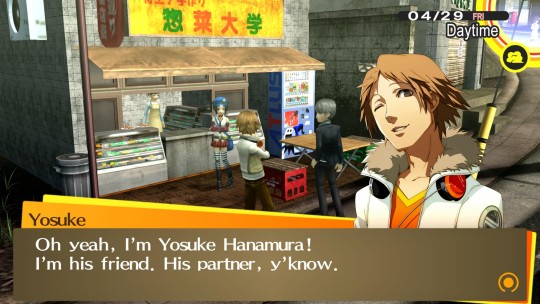

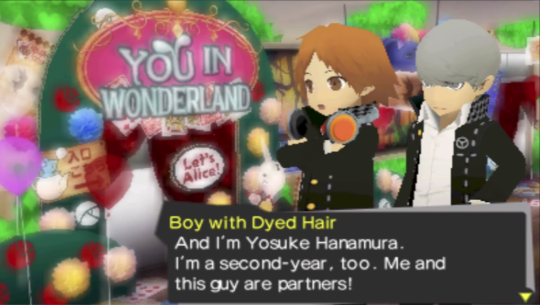
#persona 4#persona 4 golden#persona q#hanamura yosuke#yosuke hanamura#souyo#my favourite genre: yosuke introducing himself as yu's partner#ive checked p4au but i dont think theres a scene like this because its the one game where the two of them spend a lot of time separated#i could be wrong tho if anyone knows please let me know!#hes good with his queue
1K notes
·
View notes
Text
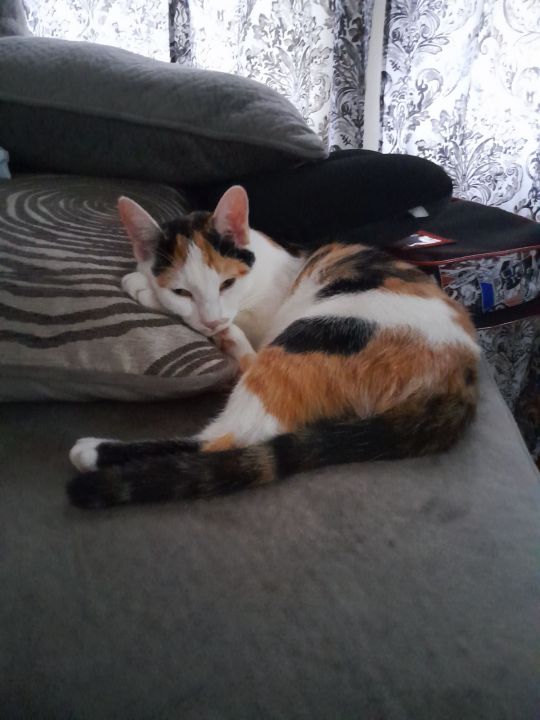
I dont have a clever and witty sarcastic comment tonight, I just think she's cute
#my brain isnt working rn its 3am ive been reading fanfics while hyperventilating over the irreparable damage i managed with my limited life#tee hee im just kinda feeling moody tonight 🤪#somebody please ban me from tumblr between 1am to 11am i do not function as a stable person between those times#i schedule my mental breakdowns they work really well with my schedule#its multitasking cause I'll already be up from insomnia its really efficient in the grand scheme of things#ah i love the fact that nobody can stop me from writing the most deranged shit in the tags of a cute cat pic <3#animals#petblr#cat#cat life#cat lovers#catblr#my cat#cat photos#cat pictures#cats of tumblr#calico#calico cat#OH UH THATS WHAT I WAS SUPPOSED TO SAY FOR AMERICANS THE REASON IM SAYING ITS NIGHT WHEN THIS IS POSTED DURING THE DAY IS BECAUSE ITS QUEUED#i queue most stuff because i dont usually have the energy or time to be active at good times#i get little bursts of post motivation and dont wanna flood my 9 followers (at least 6 are dirty bots) with my bs#im just a dumbass that never tags shit
584 notes
·
View notes
Text
Adding To or Starting a Garden
AKA, the beginning of the Plants-Related section of this series.
This is my third post in a series I’ll be making on how to increase biodiversity on a budget! I’m not an expert--just an enthusiast--but I hope something you find here helps!
Got an area of lawn you’d like to convert to a wildlife haven? An area you can stick some hanging baskets in? Want to know how your garden of tomatoes and zucchinis is already putting in a lot of work? This is the section for you!
It would be dumb of me to not acknowledge that the act of gardening can come with a lot of costs. Buying seeds, buying plants, buying soil, raised bed materials, mulch, etc. … it can all get a bit daunting, let’s be honest! But there’s quite a few ways to get seeds and plants for free or extremely cheap, which I’ll be addressing in this section! The next section will be all about addressing the other Costs in gardening and how to mitigate or eliminate them entirely.
Also, do keep in mind; there’s no need to try and convert a whole area from lawn to garden or unused to garden at once. In fact, it could actually be extremely beneficial to do it a little at a time--maybe four or five square feet to start out.
Front Lawn (or Managing Principles)
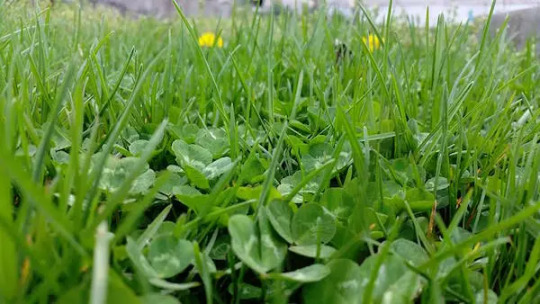
If you live in a place where you’re required to have a grass turf lawn (HOA’s come to mind…), try replacing it with native grasses instead! You could even possibly use a low-growing ground cover plant like clover to a similar effect! Reseeding/replacing an entire lawn can be a big upfront cost, but even just letting the lawn be a little messy and tall helps. If the lawn gets patchy, leave the bare spots for a little while and something different will likely pop up! Pioneer species will fill the gaps and provide benefits to other plants around them, support animals, and more! If you want to take the guesswork out of it, you could always research what the pioneer species are in your area and plant the ones you like most.
Obtaining Seeds for Cheap or Free
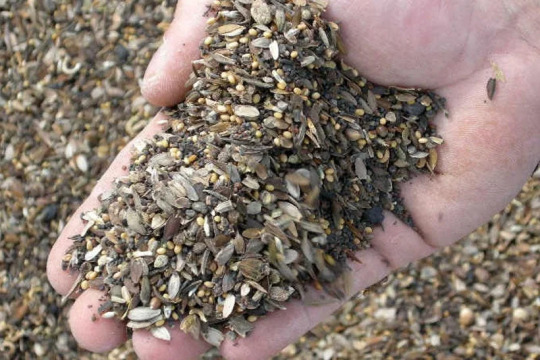
The cheapest way to start a garden is by far via seeds. However, seeds can be a bit complicated to grow, and some sources make them… way overpriced. Fortunately there are ways to get seeds for little to no cost!
Some places sell seeds for as low as a dollar, 50 cents, or 25 cents! The packets may not have a lot of seeds, but it’s definitely a good start for a low budget! I’ve personally bought cheap seed packets at Walmart--the Ferry-Morse and Burpee brands are not what we’re looking for here. Typically the cheaper ones I’ve found are American Seed (which is owned by Green Garden Products, which also owns Ferry-Morse, Livingston Seed, McKenzie Seed, and Seeds of Change. Do with that information what you will), but they’re rarely stocked near the Ferry-Morse ones in the Formal Gardening Section. I’ve most often found them on end caps near the gardening section, so you may have to weave through a few aisles to find them, but once you do there’s an array of flower and vegetable seeds to select from! Alternatively, I’ve found seeds at Dollar Tree sold 2 or 4 for a dollar in Spring as part of their seasonal product; however, when they’re out of stock, they’re typically out of stock for the year. Try to check them out early in the year!
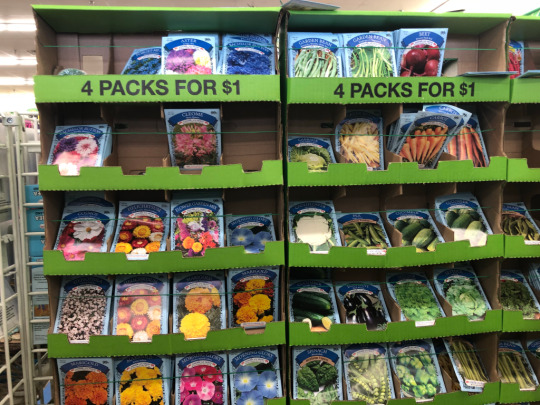
Otherwise, other seed companies like Urban Farmer or Botanical Interests will often have semi-frequent sales in spring and fall, when people are stocking up on seeds--joining their email lists can help you be the first to know when a good sale is going on!
Some foods from grocery stores will provide seeds that you can use in the garden as well. I’ve had the most luck with store-bought bagged beans, peppers, and tomatoes. Some people have had luck with watermelons, apples, citrus, squash, and more. Do keep in mind that you likely won’t get the same variety of fruit/vegetable as the one you bought--the resulting plant may look different and taste different.
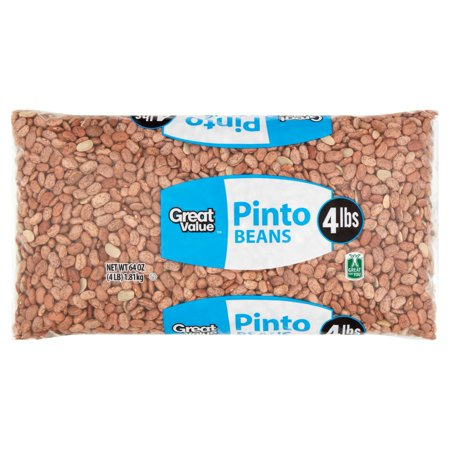
Give it a shot! Pick some beans you like--if they don't grow well, at least you can eat the rest!
If you live in the US, food-producing live plants, bare roots, and seeds can often be purchased with SNAP benefits. But what does growing fruits, veggies, and herbs have to do with boosting biodiversity? While food crops aren’t typically native, they still provide valuable shelter for native insects. Some plants even have intricate relationships with native fauna--like the squash bee, a solitary bee which exclusively pollinates cucurbits like pumpkins, squash, and zucchini. And we get to benefit more directly as well! If you’re planting a diverse range of foods in your garden (as opposed to the swaths of single-plant farms that typically produce what’s sent to grocery stores), you’re supporting high levels of biodiversity by providing a variety of plants for creatures to live and hunt around.
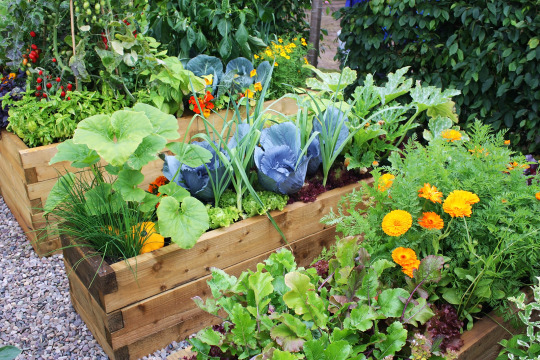
Most of the time, when we think of boosting biodiversity with a garden, we think of a colorful flower garden teeming with pollinator species. However, if we’re striving to use native species, it can be a bit difficult to find some species in stores. I can say from experience that trying to find any wildflower seeds other than butterfly weed, purple coneflowers, and black-eyed-susans is… challenging, if you limit yourself to stores like Walmart, Home Depot, and Lowe’s. You might occasionally get lucky with an ACE Hardware or a local nursery, but even then sometimes it can be hard to track down who in your area is selling what--let alone if you live in an area where no one really is selling native plants or their seeds. Not to mention, even once you find a local or online store selling the seeds you want, they can sometimes cost a pretty penny. So what do you do?
If you have the option to, consider gathering native seeds yourself! Get good at identifying the native flora and fauna--or at least, a few target plants and their lookalikes--and get ready to go! Learn where they tend to grow, when they’ll be seeding, etc. Try to identify the plant before it goes to seed (for most plants, it's easiest to identify when flowering), then check back regularly to gather seeds. Typically, if I want to learn how to collect seed from a specific plant, I just search it on Google or YouTube--oftentimes, I'm lead to the GrowItBuildIt Youtube page, so it may be a helpful resource for you as well! Of course, make sure to leave plenty of seed behind so the wild population can repopulate, and seed can feed other creatures in the area. A good rule of thumb is to take no more than 1/3rd of what's available.

Buying seed in bulk is an option if you can afford the upfront cost. Try teaming up with a few friends to buy some bulk seeds and split them amongst yourselves--you’ll get tons of seed! Prairie Moon is a popular site that'll sell seeds by the pound if you can afford the price--though they're in the US, and I believe they focus on Midwest and East Coast natives.
If you want to cheat the system, don’t buy bulk sunflower seeds--buy bags of sunflower seeds being sold as birdseed. They’re typically all black oil sunflower seeds, but they’ll sprout, and they’re fairly cheap for the amount you get!
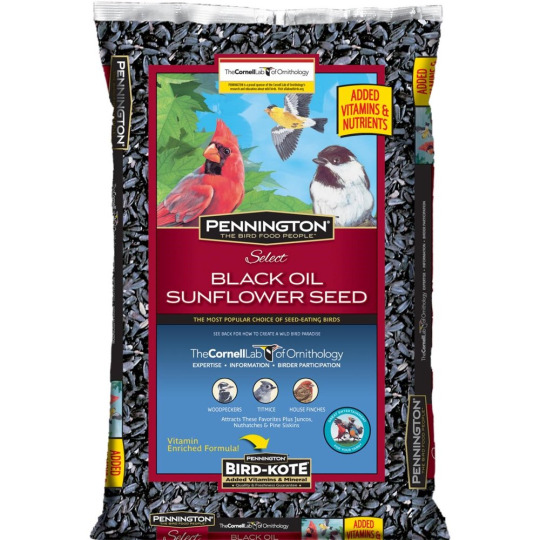
However, beware generic wildflower seed mixes! Many brands like to sell wildflower seed mixes in big box stores like Home Depot, Target, or even Dollar Tree, but they’ll often include flowers that aren’t native or possibly even invasive in your region! Before you make any purchases, double check to make sure the contained seeds won’t do more harm than good! A quality source of native seeds will provide English and Latin names for all seeds included, and will be native to the region or at least non-invasive.

See this? I don't trust this.
There’s a good handful of programs online that’ll send you free seeds if you’re planning to start a native habitat project! Poke around online and see what you can find; you might get lucky! The best time to start looking for these is fall and winter, I find--by early spring, many of them are either done or beginning to wind down... though some also start up in spring. Ultimately--just check regularly! You never know what you can find!
Other Ways to Get Plants
Don’t want to start from seed? That’s fair! You can try cuttings! Just be sure not to take too much of the plant while you do so. Make sure you’ve gotten a few leaf nodes on your cutting, and cut any flowers you may have gotten. Make sure to leave some blooms and foliage on the original plant for the creatures in the current habitat--you don’t want to destroy one habitat to make another in your garden. There’s tons of methods of rooting cuttings, many of which have different efficacy rates for different plants, but that’s a topic for another post.
If you find seedlings growing in a place where they won’t be able to sustain themselves long-term, or are in danger of being destroyed, consider relocating them! You may be able to gently dig up and transplant the seedling to your garden. Don’t do this if they’re in a place where they can easily survive--ideally, you’ll be taking plants from sidewalk cracks, heavily maintained public gardens, roadsides, etc. Do be careful while doing this--ensure your safety first!

You’re totally allowed to join gardening communities like clubs, facebook groups, and more before you’ve even put a trowel to the dirt. These are great places to learn information and advice! Many gardeners are more than happy to help out a new gardener, and will eagerly provide seeds, cuttings, or even baby plants! Talk to some people about your gardening journey and what you’re hoping to do, and you just might find some kindred spirits--or at least get more people interested in the topic!
Seed and plant giveaways and trades happen all the time in gardening clubs, as well as online! Just poke around and see what you can find! Some are explicitly trades, meaning you’re expected to send something in return, but once you get your feet on the ground with some plant knowledge you’ll be stellar! You may be able to explain you’re just starting out, and someone may send you seeds without expecting a trade, but I’d suggest trying giveaways first.

Poke around online and see if there’s a local chapter of your state’s native plant society. From there, you’ll likely be able to find a calendar of events--many of them will host plant sales in the spring, with a bunch of native plant seedlings ripe for the pickings if you can make it out and have some money to spare! Fair warning, though, you’ll want to get there early if you can. If they say they’re starting at 10, try to get there by 9:45. Year after year, there’s always record turnout, and they sell out of plants faster than ever. Just trust me on this. I’ve been let down; hopefully you won’t have to be.
Some libraries are beginning to host seed libraries! Check around and see if your library has one! Ideally, the system works best if you also have seeds to contribute in return, but if you’re just starting out I’m sure they won’t mind you taking some seeds! Just consider saving some seeds to contribute in the future and pay it forward. If your library doesn’t have a seed library? Consider asking if they’d be willing to start one! Community interest is a great way to get the ball rolling on projects like these, but they’ll only know the community is interested if the community tells them they’re interested!
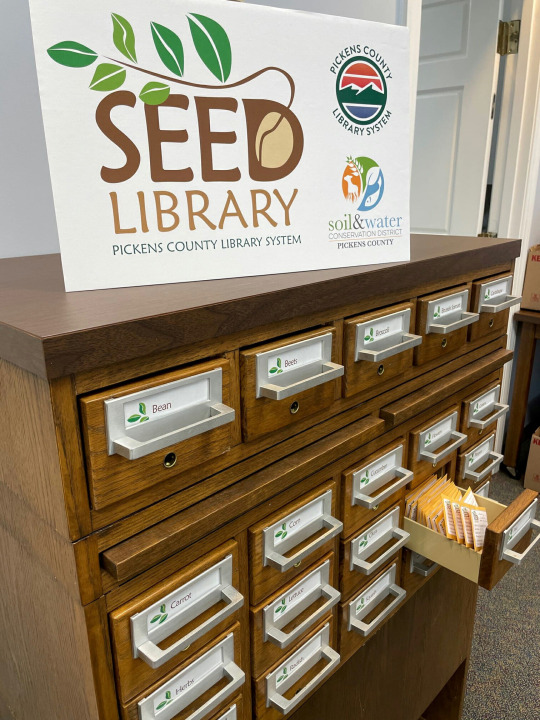
Volunteer to Garden for/with Someone Else
Maybe someone in your area wants to garden, but is struggling to find the time/energy. Many elderly people who used to garden simply can’t anymore but still would like a garden. Other people may love to have a helping hand in their garden. You might even find a few people in your area interested in renting and sharing a community garden plot with others, so they don't have to handle it all on their own! They may be interested in increasing biodiversity right now, or may be willing to if it’s brought up to them. You might be just the kind of person someone needs! Since it won't be your garden, you’ll likely need a bit of permission and collaboration to get anything in particular going, but it’s worth a shot and a way to maybe even make friends!
Again, your mileage may vary with some of these. You may not know where there's a bunch of wildflowers growing in your area, or maybe your local library doesn't have a free seed library. That's okay! Do what you're able to, find what you can find, get what you can get! And there's never any shame with starting small--in fact, starting small can make the project easier to manage and expand when you're able!
That's the end of this post! My next post is gonna be about ways to start growing plants cheaply--low cost seed starting set ups, essentially. There's a lot of good options, many of which I've used myself even! Until then, I hope this advice is helpful! Feel free to reply with any questions, success stories, or anything you think I may have forgotten to add in!
#biodiversity#solarpunk#gardening#outdoor gardening#growing from seed#ani rambles#out of queue#the biodiversity saga#i will be honest I have never flat out approached people to offer to help them garden#HOWEVER. People HAVE approached ME asking ME to help THEM with/plan THEIR garden#granted it was after I'd been gardening for a good few years. and its mostly family or family friends but yknow#people would be like 'oh wanna help me with my veggie garden?' even before I tried growing vegetables#i don't think the library near me has a seed library but you just wait until i. get the courage. to go to the library regularly.#i've seen people also make their own little seed library structures kinda like a little free library but like#i dont think my neighborhood is about that life.#if any of yall have those though it could be a great resource! also send pics because I love seeing them#not to say that this post should become a giant seed trade but if it did become that i would be the opposite of mad#if there's any typos blame my sister shes got the hotel room at like 60-something degrees and I am FREEZING#welp time to shut up now bye
1K notes
·
View notes
Text

the raw guy
#vinny vinesauce#vinesauce fanart#vinesauce#what if i told u i was very embarrassed to post this#rlly badly done low effort sketch studies of him bc fun fact my computer deleted the og file the other day so i just. redrew it all wihtout#caring too much the second time around BUT I WANTED TO DRAW HIM it was sooo fun still ddont know how to draw him too well but ill see.#need to watch more of his streams sorry guys im from jerma nation but i like red vox so thats why im crossing territory#queue are lovely#i added to ita flags bc its funny and also i am so used to putting a flag SOMEWHERE . my brain
1K notes
·
View notes
Text

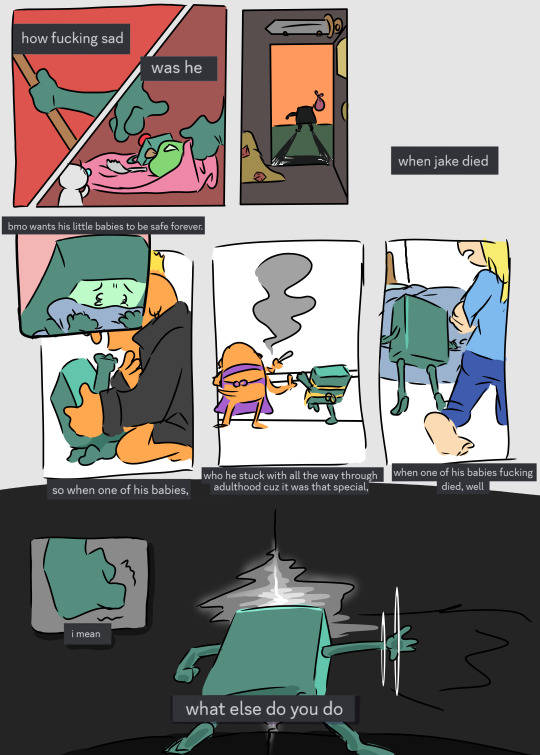

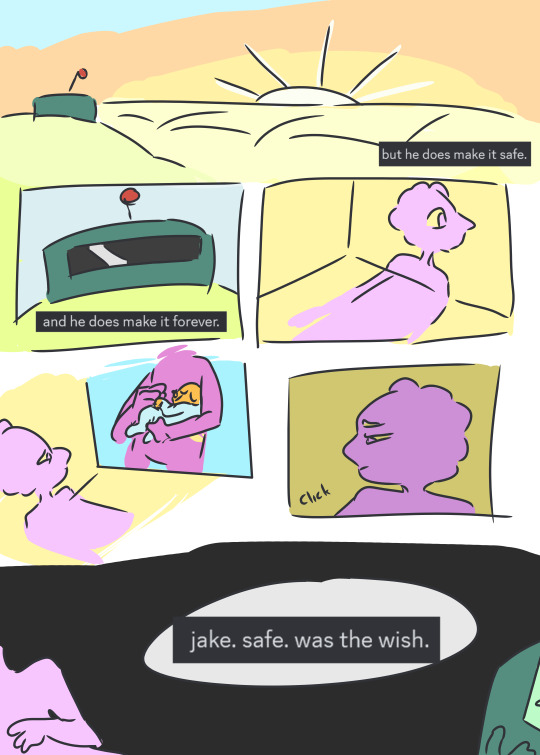
hey i got really sad about baby world being bmo's wish. thats actually awful. jake. safe. thats what prismo got out of that wish.
i clearly couldnt keep my energy up through the end of this but i still. wanted to. p.ost, it. before fnc tomorrow. :]
#me: i stopped filling up my queue bc my standards suddenly got higher#me posting comics that make me antsy cuz i just know i could make them better but i NEVER WILL: aha#this was a discord rant i just cut up and drew panels for. does it make any sense. i hateee formatting comics but im learning slowly#adventure time#fionna and cake#bmo#prismo#finn#jake#also the gumball guardians. and lich!billy. but#oh also secret baby magic man. hi baby magic man#digital#i mean i can see it being sillyfunny but i decided its actually sad. he wants jake to be safe.#and prismos like hell yeah dude ill drink to that! (bursts into divine tears)
875 notes
·
View notes
Text

Wanted to do Rauru justice - may sketch Mineru again soon
#rauru#king rauru#totk#totk fanart#tears of the kingdom#tears of the kindom fanart#totk rauru#sketch#art#traditional#furry#sketches#pencil#furry art#furry artist#small artist#small art account#small art blog#i need to do more fanart#my commission queue is badically empty for the first time in 10 years and it feels great#got a few months to focus on portfolio and personal work before needing to do commissions again#tbh#i kindof wish i could just set up a patreon or something to continue doing sketchwork for the rest of my life#definitely doing more pen sketches too#its just nice to have a break
213 notes
·
View notes
Text


i dig his earnest soul & neglected middle child vibes. he's so Charming and for what reason!
#perhaps i just enjoy pathetic men!#perhaps i relate to how he's treated! who's to say!#grabbing him and putting him on my trinket shelf#i'd listen to his poetry. i'd hate every fucking second but i Would listen <3#look at him! Look! i want to perhaps toss him around in a sack!#there is a 3d model of him in my mind and im just. violently spinning him#my fav pillars: latter & toodaloo THANKS I LOVE THEM.#scribble salad#latter pillar#welcome home puppet show#ok its time to queue this and sleep. im seeing spiders#you know it's time to sleep when the trash bag strings turn into a tarantula!#god. latter. i love him and his too many stupid fucking limbs AGH HE'S SO PERFECT.#howdy's just a hater smh. and repressed as shit - i see him. he's not fooling Me....
336 notes
·
View notes
Text
deerly beloved— a mizuena au comic

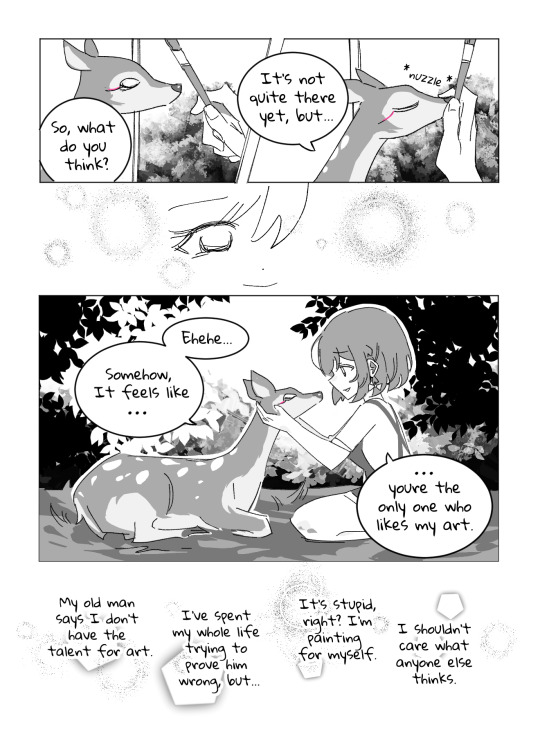


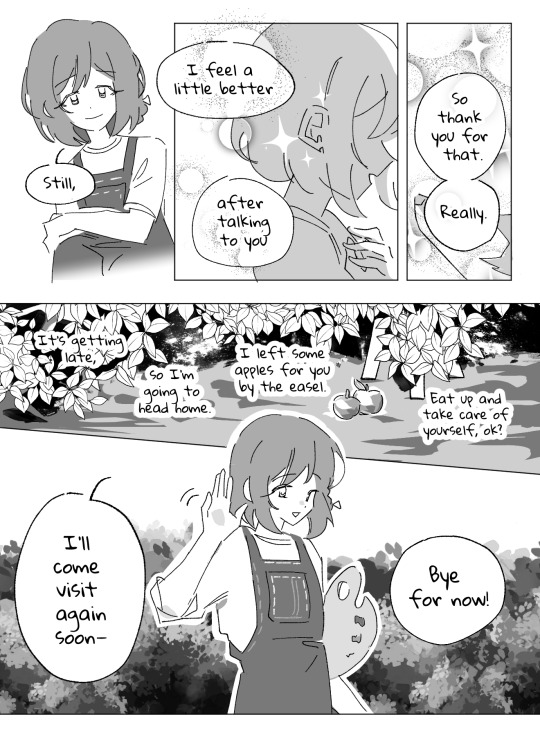







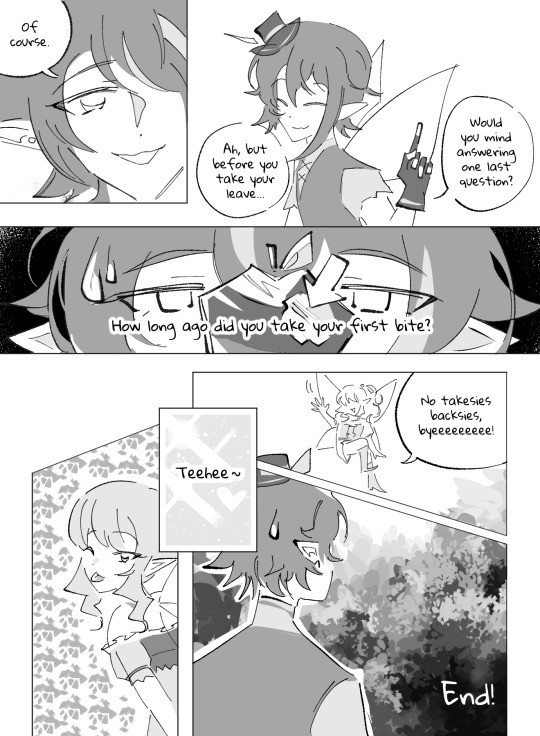
#mizuena fairy au comic!#mizuki is a fairy who can take the form of a deer and ena is a human who often paints in mizuki's forest :)#rui is also a fairy and mizuki's emotional support alchemist#AAAAA I CAN FINALLY POST THIS COMIC IN ITS ENTIRETY#the relationship dynamics are probably outdated bc i drew this a bit after the fairy set/exciting picnic event came out? time flies...#ena shinonome#mizuki akiyama#rui kamishiro#project sekai#mizuena#mizurui#queue
1K notes
·
View notes
Text

#21.01.23#3238#ok HI. gettin back to queue. resume.#because 1/ i wanted to not get past the full year posting delay#2/ im gonna have too much free time again so i can put some time into dealing with the backlog#its gonna be a rough start bc theres real bummers in the upcoming ones sorry#CaGab#PoTal#LiLua
359 notes
·
View notes
Text
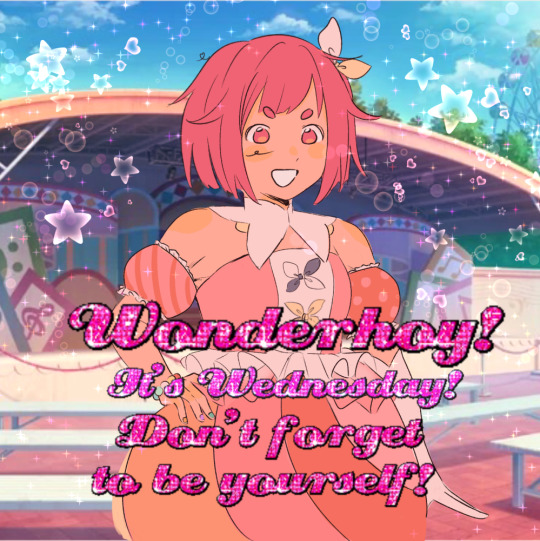
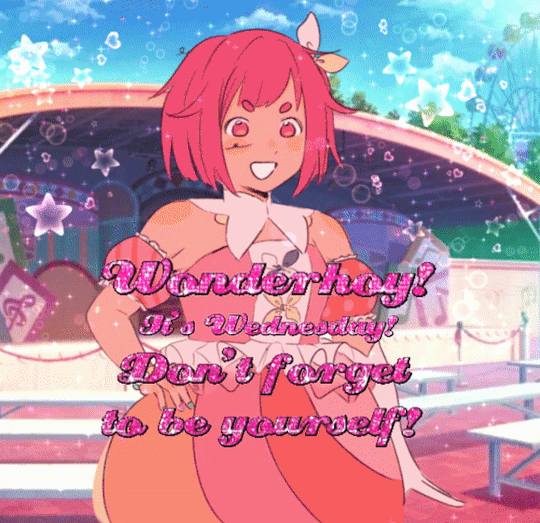
SPARKLE ON ✨✨✨
#project sekai#pjsk#prsk#emu otori#gif#blinking#proseka#sparkle on!#i was gonna queue this for wednesday but thats so painful for me so happy wonderhoy its wednesday sunday#kirakira dokidoki mochimochi puyopuyo wakuwaku wasshoi#i went through hell and high water and like 8 online free glutterbtext gif generator websites to find the exact font#thank you glittertextonline dot com#ive thought about drawing a lot of jerma bullshit as wxs. plesde be thankful that im focusing on artfight#the nene985 dollhouse is still on my mind. i wanna draw her leaping out of that window really bad#idk what to type here since this is like a week i advance and i wont remember scheduling this in about 20 minutes. ummmm#OHHH I HOPE MY GUITAR IS FIXED BY THE TIME THIS POSTS I FOUND A USED AMP FOR MY BIRTHDAY ^___^ I WANNA PLAY YIPPEEEEE#anyways.... be who you are. shalalalaaaa ^_^
1K notes
·
View notes
Text

THE CUTIE PATOOTIES THEMSELVES FROM @altraviolet FIC
i love posting stupid doodles its my hobby
❤️❤️
#this is my first time drawing characters kissing and i find that very funny#transformers#the echo garden#queue the madness soundwave#I LOVE ECHOGARDEN ITS ACTUALLY BECOMING A PROBLEM PLS SEND HELP
243 notes
·
View notes
Text
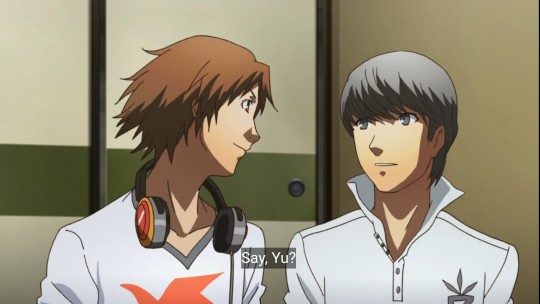
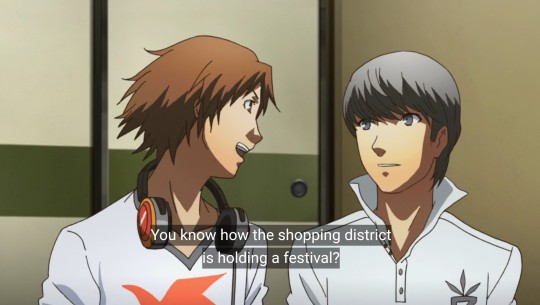

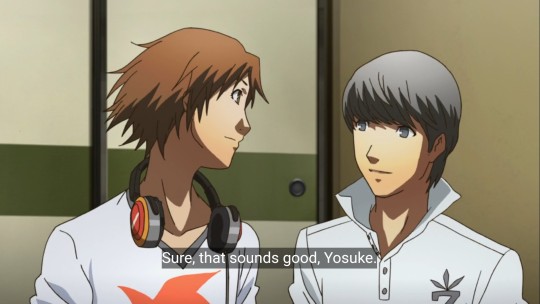
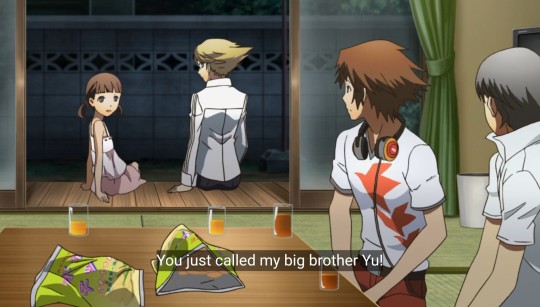

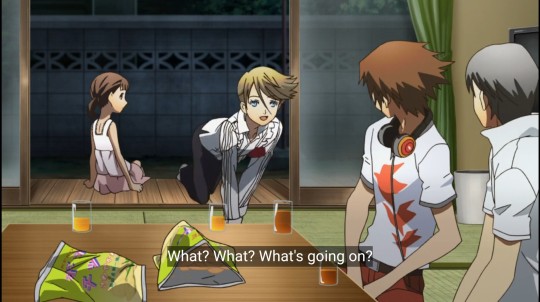

#p4 anime#persona 4#hanamura yosuke#yosuke hanamura#OK LISTEN THIS SCENE COMES AT THE HEEL OF MITSUO'S ILLUSION ON YU.#and urhajhsnd im not going to break down the souyo aspect of it because people smarter than me have already done so but#im gushing about it anyway because yosukes been going around calling yu his partner for quite some time now#but now hes reached a new level in intimacy. first name no honorifics intimacy.#its also yosuke forgetting about the others briefly because when theyre together theyre always just in their own world.#and when nanako picks up on the change they just laugh. but when teddie picks up on it yosuke suddenly gets embarrassed#and thats when it pans to everyone else whos also watching that yosuke remembers theyre not alone and hes so shy. HES SO SHY#he panics a little and its almost like doesnt want teddie to find out because hes afraid of what teddie might say?#also look at teddie's face like OH HE KNOWS. HE KNOWS SOMETHING.#hmm teddie tell us what secrets about yosuke you're hiding#he's good with his queue
368 notes
·
View notes
Text
Do you think bugs fall in love?
Their small bodies host even tinier brains. Built to crawl through soil and rocks bigger than itself. Running on a simple software bouncing between eat, sleep, fight, flight, and copulate.
V1 is smarter than a bug. It must be. It’s a war machine, so it must be. Its programming is complex enough to fry several motherboards; the internals are heated from constant, unrelenting processing needs. If it updates its optical data intake to any greater degree than these rough, messy polygons, it’d surely perish from the overwhelming information.
V1 is built to kill first, survive second. To be fair, survival would ensure more killing, so it’d be more effective. Moving through the battlefield, culling lives, drawing blood. Perfectly aligned with its programmed objectives, then.
Gabriel is smarter than a bug. He must be. He’s an angel, so he must be. He’s one of the best soldiers in the heavenly realm. Armour and swords glistened with pride and justice. He sees all. He judges all. His loyalty and perfect track record have earned him a high rank within the order. Leaving behind the creaturely "it". His light burns hot and bright within his constitution.
Gabriel is built as a messenger of the Father, then a judge of Hell. To be fair, the role of a judge was assigned to him by the council, so he supposes that his placement can be summed up as the bearer of the divine authority to bring right to all other creatures. Perfectly aligned, then.
Bugs… Well, they’re the same. I suppose. Small beings. Running pre-programmed orders derived from centuries of evolution: eat, sleep, fight, flight, and copulate. No role. No responsibilities.
Bugs are built naturally and fully, unlike humankind; but formed and ready to go within seconds from their births, like machines and angels.
So. Do they live?
When the machine and the angel escape their chains, do they see themselves in bugs?
Bugs are born to live, temporarily, fleetingly, yet live nonetheless. Do they, then, deserve to live, freeing and meaninglessly. No role. No responsibilities.
So. Do bugs love?
Do they learn that they can go beyond their basic structures? Do they see their own reflection in each other’s compound eyes? Do they recognize each other’s bodies, scents, heat? Do they feel the desire for closeness?
To flutter wings like a dance of waltz. To brush antennae like butterfly kisses. To greet and caress and lie next to each other near their death.
To move through the sky in battle, in passion. To clash swords and fists and bullets. To greet and caress and lie next to each other near their death.
The same cells in the same blood coursing beneath the same suit of exoskeletons.
Machine, angel, bug. Boiled down to the barest essence of existence; crisp simplicity.
To live, to love.
#(im thinking abt how angels have a default pronoun of it/its and went insane – they’re so bugs; like machine)#v1 ultrakill#ultrakill#gabv1el#gabriel ultrakill#az thoughts#also if this flops im flinging myself into the sun#is this any good; is it; is it <- desperate#im just really tired rn i think; its fine#wrote between lectures; thought abt queueing but whatever its fine#got like 4 group projects and a giant assignment and no free time during the last weekend i am fine i am fine i am fine#its fine for me to write Things instead of working on stuff this is destressing its fine#i need to be spun in a washing machine and left on a hanger to dry for approximately 12 hours and then ironed for way too long#<- going insane but in a bad way#someone pls take me out (date or murder; surprise me)
153 notes
·
View notes
Text
What to Do Once Things Are Planted?
This is my seventh post in a series I’ll be making on how to increase biodiversity on a budget! I’m not an expert--just an enthusiast--but I hope something you find here helps!

So you’ve gotten started on making a garden to boost biodiversity! 10/10, excellent work! So, now what?
First, you’ll need to keep watering the plants--especially if you’re going through a dry season. Native plants will be more acclimated to your area’s seasonal weather, but they’ll need a helping hand while they’re getting established--especially if you’re starting with young, tender seedlings. With that in mind, if you accidentally skip out on crucial watering days, don't panic! There's been tons of times where I haven't watered for an entire summer and had perennials come back the next spring! Even this year, during a heatwave, I completely did not water my swamp milkweeds, but they're already popping back up! You may also need to go in and weed, especially if you’re seeing invasive species popping up in the garden. Invasives are no good--if you do anything, do your best to get those out as effectively and safely as possible!
If you’re needing to maintain your shrubs in spring and summer, double check to make sure there are no active bird or insect nests within them. If it’s possible to wait until later to cut your shrubs, it could be extremely beneficial.

When fall and winter come around and your plants begin to die back, don’t cut them away if you can! Many insects overwinter in the plant stems left behind as perennials die back to the roots. In addition, birds will use seed heads as a source of food over the winter. Try not to clean things up until late winter/early spring, when other food sources are beginning to come back and things are growing again. By then, the insects should be waking up and leaving the plant stems as well.
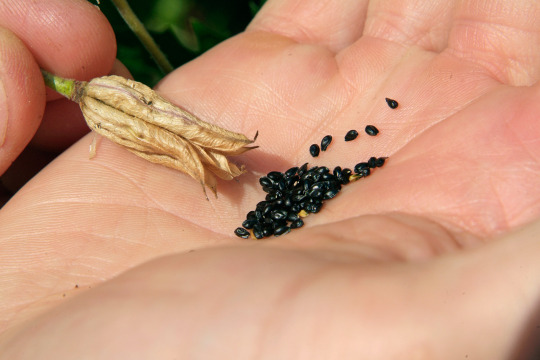
However, don’t let this discourage you from collecting seeds! Collecting seed from your plants is a great way to continue gardening at low cost, as well as making friends and encouraging others to garden by trading seeds or offering them as gifts. If you're in an area where you do need to cut back, this is a great opportunity to collect the seeds and save them for the future. You could also cut back what’s dying in the front yard and keep things to overwinter in the backyard. Some overwintering habitat is better than no overwintering habitat.
Want to know how to collect seeds from specific plants? I've found YouTube to be a great source of info for this! Knowing what you're doing and when is key to getting a viable harvest.
As your mulch begins to break down, you’ll need to keep adding more to top it off, if you can. It can get a bit repetitive, but no worries--the mulch breaking down means your soil is improving!
If possible, add to your garden! Expand, add in new things, and keep encouraging the growth of native plants. If you couldn’t add that water feature in year one, see if you can in year two! New interest in birds? Add a birdhouse, or more bird feeders. Loving the butterflies? Add plenty more nectar-rich plants, or do more research into what they lay their eggs on! Want more color? See what else you can add in! Came into some new pots to expand your flowerpot garden with? Find cool native plants to put in them! I always encourage people to start small and then expand over time, as opposed to starting big and getting overwhelmed.
Keep learning and observing native species of birds, insects, mammals, etc. See what’s coming to your yard now, and look into how you can improve things more for them on your budget. If you aren’t seeing what you were hoping, see if there’s other actions you can take that’ll attract what you’re hoping to see in your backyard habitat. Knowing more about the world around you makes it easier to know how to help the world around you. Talk to others about what you’re doing, the changes you’ve made, and the results you’ve seen! Curious neighbors? Work friends? Your closest homies? Your family? All fair game! You just might be the one who gets someone else interested in making their space a habitat for local wildlife!
That’s the end of this post! My next post is gonna be about the secret Other Thing you can do to help biodiversity--tackling invasives! Until then, I hope this advice was helpful! Feel free to reply with any questions, your success stories, or anything you think I may have forgotten to add in!
#biodiversity#solarpunk#gardening#outdoor gardening#ani rambles#out of queue#the biodiversity saga#at least it hasn't been 2 months since the last post amiright#i know its september so by this point a lot of northern hemisphere folks are winding down on gardening#buuuut winter's a good time to buy seeds for cheap! and for plotting and planning#and meanwhile the southern hemisphere will be just gearing up!#either way I hope this advice has been helpful so far!
337 notes
·
View notes